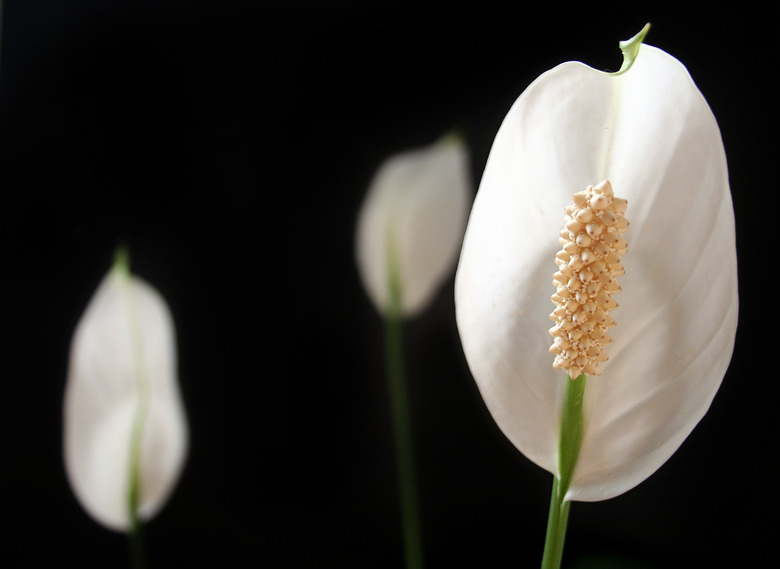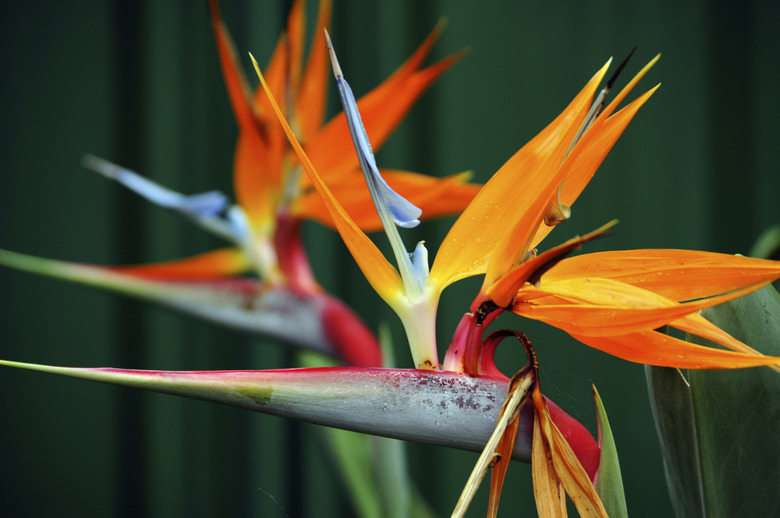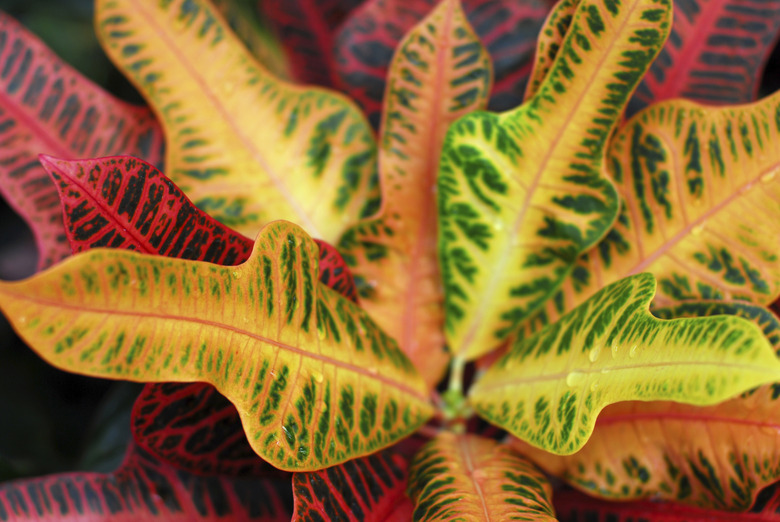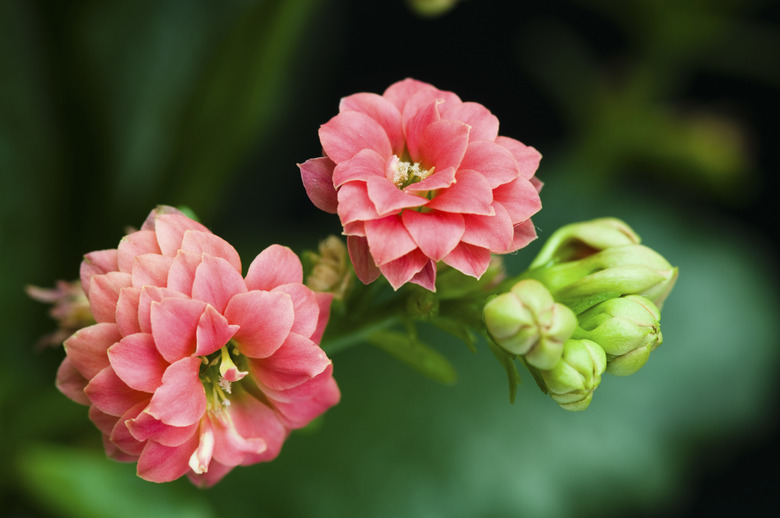Ideas For Indoor Atrium Plants
Designed as a way to integrate plants inside a building, an atrium is an open space lit by a skylight. It echoes the open-air atria that served as the hearts of ancient Greek and Roman homes. Determine which plants are suitable for your atrium by studying its pattern of light as the days and seasons pass, seeing where areas of sunlight and shade occur. Then situate permanent, evergreen plantings in the light conditions appropriate for them.
Step 1
Areas of an atrium shaded by parts of the building or other plants need shade-loving plants. Vary the heights of the plants you choose for those areas. A tall option for shade to partial shade is the dracaena cultivar "Janet Craig Compacta" (Dracaena deremensis "Janet Craig Compacta"), which can grow to a height of 6 to 10 feet and has stiff, green, leathery leaves that hide its stem. Hardy outdoors all year in U.S. Department of Agriculture plant hardiness zones 10b and 11a, "Janet Craig Compacta" branches from the bottom and forms a clump of stems. Consider shorter-growing peace lilies (Spathiphyllum spp.) for full shade. They range from cultivars such as "Sensation" that can reach 4 feet tall to dwarf plants 12 to 15 inches tall. "Sensation" has dark-green foliage year round and white, lilylike, long-lasting flowers in spring. Peace lilies are hardy in USDA zones 10b through 12.
Step 2
- Areas of an atrium shaded by parts of the building or other plants need shade-loving plants.
- A tall option for shade to partial shade is the dracaena cultivar "Janet Craig Compacta" (Dracaena deremensis "Janet Craig Compacta"), which can grow to a height of 6 to 10 feet and has stiff, green, leathery leaves that hide its stem.
Sunny Areas
Step 1
Parts of an atrium that receive a lot of sunlight require plants that tolerate high light levels. Plant options for full sun or partial sun include bird of paradise (Strelitzia reginae). Its large, leathery leaves and flamboyant, long-lasting, orange and purple flowers provide a tropical aura. Bird of paradise reaches 3 to 5 feet tall and is hardy in USDA zones 9 through 11. If you desire a full-sun plant that resembles a miniature palm tree, then consider the cycad called sago palm (Cycas revoluta). Its stiff, leathery leaves are arranged in a rosette, and eventually its trunk forms. Sago palm takes decades to achieve its full size of10 feet tall and 8 feet wide. It is hardy in USDA zones 9 through 11.
Step 2
Step 3
- Parts of an atrium that receive a lot of sunlight require plants that tolerate high light levels.
- Bird of paradise reaches 3 to 5 feet tall and is hardy in USDA zones 9 through 11.
Colorful Foliage
Step 1
Atrium plants with colorful foliage instead of flowers contribute color all year and don't have to be deadheaded. An example is croton (Codiaeum variegatum), which comes in many leaf colors, from greens through yellow, red, pink, black and orange. Partial shade is best to develop its leaf color. The plant is hardy in USDA zones 9b through 11, and some varieties reach 6 feet tall. Lower-growing plants with brilliant leaf color include some coleus varieties (Solenostemon scutellarioides cultivars), which are hardy in USDA zone 11. Their leaves are red, pink, purple, orange or lime and combinations of those colors. Coleus plants are fast-growers that need to be cut back on a regular basis. Renew the plants from time to time by replacing them with rooted cuttings.
Step 2
Step 3
- Atrium plants with colorful foliage instead of flowers contribute color all year and don't have to be deadheaded.
Colorful Flowers
Step 1
Keeping flowering plants in containers allows you to use them on a rotational basis for seasonal color. Designate prominent places in the atrium for showcasing the container plants, either sinking their pots into the soil or placing them on top of the ground. When they go out of bloom, replace them with plants that are in bloom. One plant that blooms from winter to spring is kalanchoe (Kalanchoe blossfeldiana), which has pink, yellow, red, lavender and orange flowers. Its leaves and stems are often almost hidden by its blooms. Kalanchoe is hardy in USDA zones 10 through 11. Another winter-blooming plant is poinsettia (Euphorbia pulcherrima); its cultivars have red, white, pink, or yellow blooms. Poinsettia is perennial in USDA zones 9 through 11.
Step 2
- Keeping flowering plants in containers allows you to use them on a rotational basis for seasonal color.
- Another winter-blooming plant is poinsettia (Euphorbia pulcherrima); its cultivars have red, white, pink, or yellow blooms.



